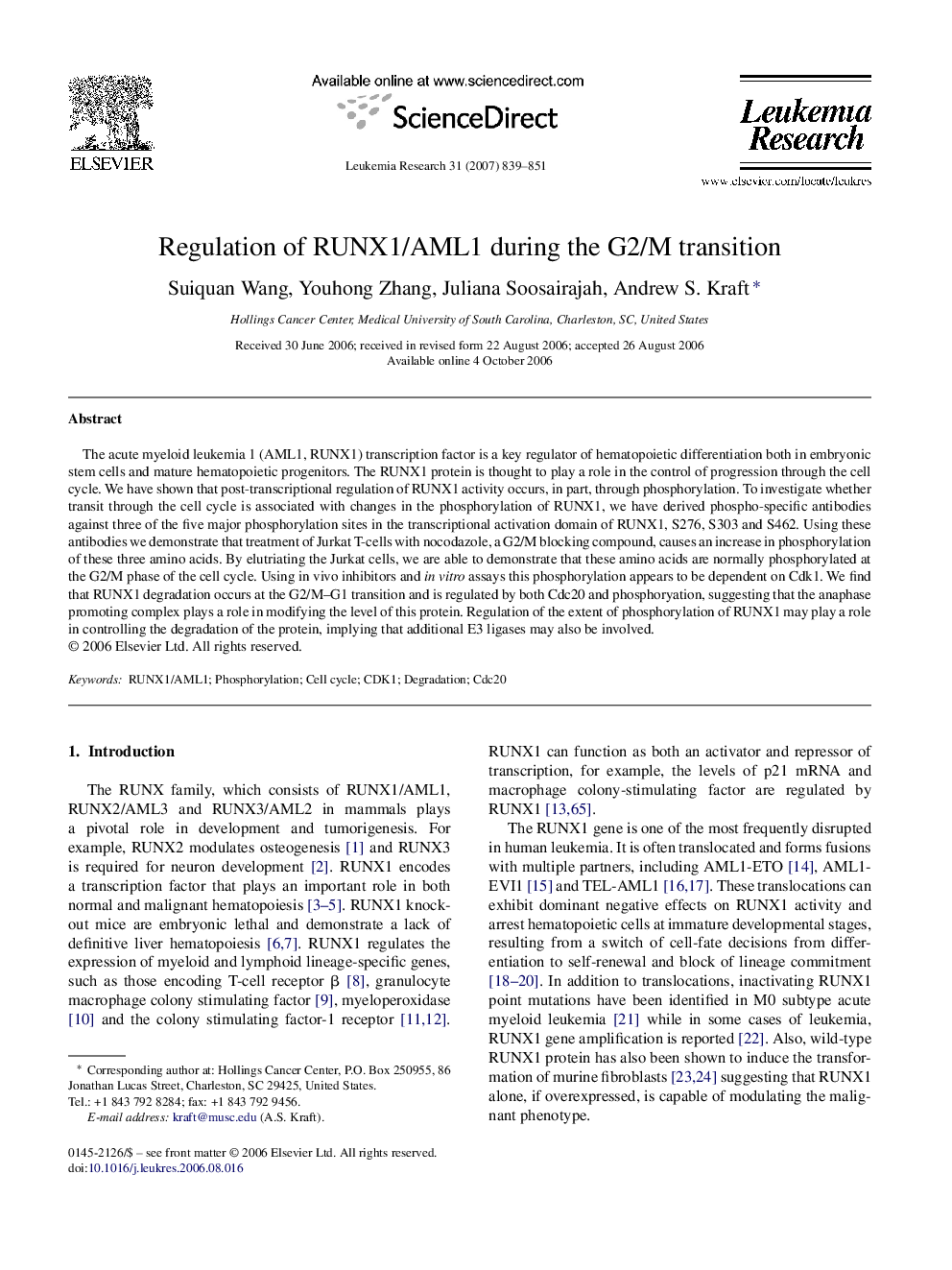| Article ID | Journal | Published Year | Pages | File Type |
|---|---|---|---|---|
| 2139410 | Leukemia Research | 2007 | 13 Pages |
The acute myeloid leukemia 1 (AML1, RUNX1) transcription factor is a key regulator of hematopoietic differentiation both in embryonic stem cells and mature hematopoietic progenitors. The RUNX1 protein is thought to play a role in the control of progression through the cell cycle. We have shown that post-transcriptional regulation of RUNX1 activity occurs, in part, through phosphorylation. To investigate whether transit through the cell cycle is associated with changes in the phosphorylation of RUNX1, we have derived phospho-specific antibodies against three of the five major phosphorylation sites in the transcriptional activation domain of RUNX1, S276, S303 and S462. Using these antibodies we demonstrate that treatment of Jurkat T-cells with nocodazole, a G2/M blocking compound, causes an increase in phosphorylation of these three amino acids. By elutriating the Jurkat cells, we are able to demonstrate that these amino acids are normally phosphorylated at the G2/M phase of the cell cycle. Using in vivo inhibitors and in vitro assays this phosphorylation appears to be dependent on Cdk1. We find that RUNX1 degradation occurs at the G2/M–G1 transition and is regulated by both Cdc20 and phosphoryation, suggesting that the anaphase promoting complex plays a role in modifying the level of this protein. Regulation of the extent of phosphorylation of RUNX1 may play a role in controlling the degradation of the protein, implying that additional E3 ligases may also be involved.
